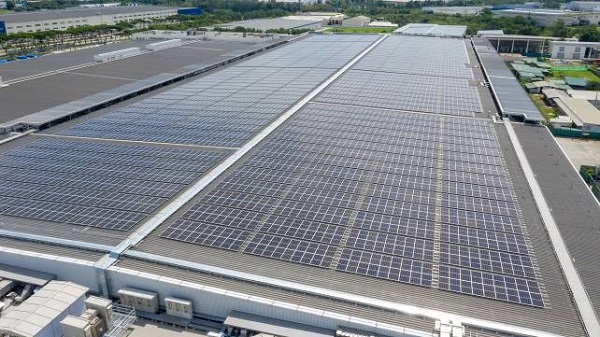Shift to renewable energy puts Murata ahead of the curve
Responding to the climate emergency has always seemed like a double-edged sword for business. Settled science tells us that we must act now to avert the disaster of further global warming. Commerce, especially short-term investors, tells us that business costs must be minimised to protect current profitability. Corporate management is left to square this circle, needing to invest for long-term benefit while having to protect short-term returns.

What’s usually missing from this dialogue is the notion that responding to climate change represents a huge opportunity for those willing to take it. Surely if almost everything about the way we farm, eat, live, travel, communicate, trade, and manufacture, needs to be rethought to protect us from further global heating, this creates the biggest opportunity for technology companies in decades? Even the law of unintended consequences, in which one climate mitigation action spawns unforeseen challenges that need addressing in turn, is on business’s side. Opportunities abound, for those who are willing to recognise them and brave enough to act on them.
We’re finding this in our own business. For example, our customers are asking us to undertake multiple climate mitigation actions, such as making it easier to recapture the materials used in our products and directing us to use more renewable energy to power our processes. They know that taking this kind of action is important to their customers and so it becomes important to us, not just to meet their requirements but as a differentiator in the market we address. And so we are taking steps to address the issue.
Two Murata factories in our home market and one in the Philippines already run exclusively on renewable power. Their aggregate consumption now makes up 15% of Murata’s total energy use. The wider plan is to ensure that Murata gets 25% of its energy from renewable sources by 2024 and is completely powered by renewables by 2050. We’re putting our money where our mouth is, dedicating one third of our $1.9bn capital expenditure over the next three years to environmental projects.
https://corporate.murata.com/en-us/csr/sdgs-initiatives/case2-mlcc.
“Stakeholders’ and society’s demands have changed, and we must move fast because we can’t do this overnight,” Norio Nakajima, president of Murata, told Bloomberg News in a recent interview. “If we act first, these changes will bring us huge business opportunities.”
Murata is hoping to take early mover advantage by acting now to increase the amount of renewable energy it uses. Like many other national power grids, Japan’s needs more renewable generation capacity and an upgraded infrastructure, and so Murata will lock in long-term contracts now to secure the renewable power we will need in future.
And here’s that law of unintended consequences in action, creating new business opportunities for those brave enough to act early on climate change. The rapidly changing profile of energy generation, distribution and consumption in Japan is creating demand for battery-based energy storage systems that can help ensure continuity of supply for both domestic and commercial customers.
Murata already sells Fortelion energy storage modules with capacities of 1.2kWh and 2.1kWh, which are designed to act as building blocks in energy-storage systems for absorbing solar power, smoothing peak demands, and acting as a backup in domestic and small commercial settings. But it also uses the same modules in its 2.1MWh battery backup systems, which are housed in shipping containers and designed to help avoid brownouts and mitigate AC frequency changes at the utility level.
Nakajima sees the advantages of addressing such opportunities as they arise. He told Blomberg News: “It may take some time when compared to traditional investment on output capacity, but I have no doubt that we can recoup our investment in the environment.”
